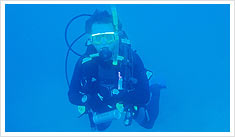Periodontitis treatment - prevention and care:
Periodontitis (commonly known as periodontal disease) is a disease of the periodontium. Around 80% of all people suffer from this disease. Periodontitis is usually painless and lasts for years. The disease is mainly the result of poor oral hygiene. However, an unbalanced diet that is low in vitamins can promote the development of the disease, as can excessive smoking.
The onset of periodontitis can be recognized by certain symptoms, such as bleeding gums and an unpleasant aftertaste. Periodontitis can be effectively prevented by regular tooth cleaning and treatment of the gums, a varied, healthy diet and an examination at the dentist at least every six months.
Course of the disease
Periodontitis always begins with an inflammation of the gum line surrounding the neck of the tooth (gingival cuff). The disease then progresses and penetrates into the depths of the tooth bed in which the teeth are embedded (alveoli). The retraction of the gums can no longer be stopped and the bone compartments become smaller and smaller. The teeth become loose and interfere with speaking and chewing. In most cases, removal of the teeth can no longer be avoided at this point.
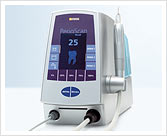 |
Ultrasonic system PerioScan
Photo courtesy of Sirona Dental Systems GmbH |
Periodontitis development - early detection
Periodontitis can be recognized by the following signs: the teeth become longer because the gums recede, bad breath develops, the front teeth move and tilt outwards, gaps appear between teeth that were not there before. Early warning signs are an increased tendency for the gums to bleed and an unpleasant "aftertaste".
Periodontitis development - self-help
Periodontitis can be prevented by regular tooth cleaning and treatment of the gums. A balanced, healthy diet also plays a very important role, as does a six-monthly check-up at the dentist. If the gums have a pale pink color, they are healthy. Fine zip-shaped outlets, called papillae, fill the spaces between the teeth.
Inflamed gums become very red in color and tend to bleed. This can be very painful when brushing your teeth.
Preventive tooth brushing - but the right way!
The following is a tooth brushing technique used by many people.
Depending on your age (child or adult), taking into account possible pre-existing conditions and whether you brush with an electric or manual toothbrush, there are individual differences in the optimal brushing technique. We will be happy to explain the right brushing technique for you in a prophylaxis session at our practice.
Teeth should be brushed after every meal (3 times a day) to prevent the build-up of harmful plaque.
The recommended time for tooth cleaning is 3 minutes.
First, the mouth is rinsed thoroughly and the water is pressed through the interdental spaces to loosen the fresh food residue.
The outer surfaces of the teeth are then cleaned first with toothpaste and a toothbrush. With the mouth slightly open, start at the last molar in the left upper jaw. Using light pressure, small circular movements are made on 2 - 3 teeth at a time - approx. 10 times. The toothbrush is then moved a little further forward again. In this way, the teeth are cleaned in small sections up to the right side of the upper jaw. The same procedure applies to the lower jaw. Start at the bottom left of the last molar and do not forget the inner surfaces. Finally, all chewing surfaces are cleaned. Now scrubbing back and forth is allowed. Then rinse the mouth thoroughly again to remove all the food debris. Be careful not to apply too much pressure from the sides when brushing your teeth, otherwise the delicate tissue around the teeth will retract and you will "scrub" the necks of your teeth free. You should brush with a maximum pressure of around 200 grams. It is not the force but the time that is decisive.
- Cleaning with a toothbrush
- Cleaning with dental floss
- Movement sequence inside
- External movement sequence
There are many other things that should be taken into account. We as the practice team can give you many more tips on prophylaxis.
What should I do when the first signs of periodontitis appear?
The first port of call is the dental practice. Here it can be determined whether it is periodontitis, how severe it is and which treatment steps are necessary.
This is usually followed by a professional tooth cleaning. After a few pre-treatment appointments, the area deep in the pocket is then cleaned. Special hand instruments are usually used here. To support or optimize the treatment result, our practice also uses ultrasound devices, for example, which perform specially defined movements.
Photos: courtesy of Dürr Dental
- The Vector™
- Fig. 2 - 4: The Vector™ in use
In addition to the Soniflex, which performs elliptical movements, the vector system is also used. With this, a powder-liquid mixture is set in ultrasonic vibrations, which gently removes deposits from the tooth root and polishes the root at the same time.
The laser can be used as a further supportive measure. This is able to eliminate or kill bacteria in the gum pockets without additional medication. It can also remove diseased tissue and create the conditions for the gums to grow back onto the tooth (deep epithelialization).








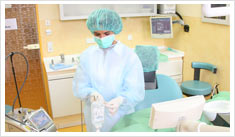
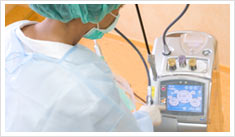
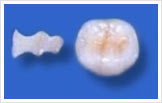
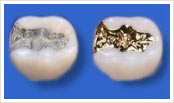
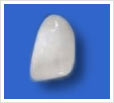
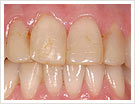
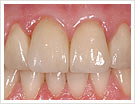
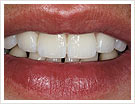
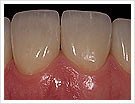
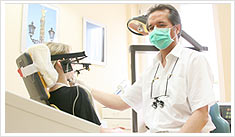
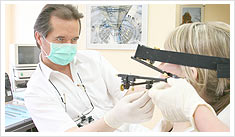
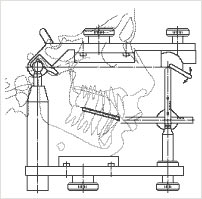
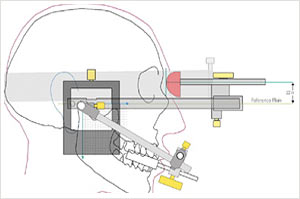
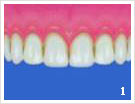
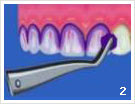
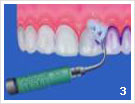
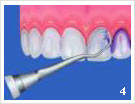
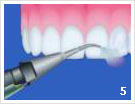
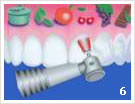
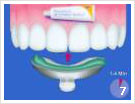
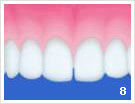
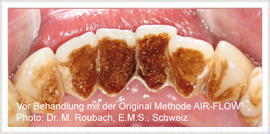
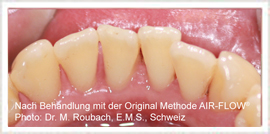

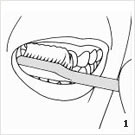
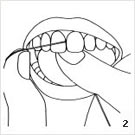
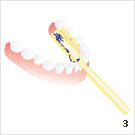
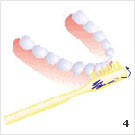
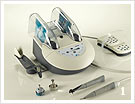
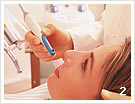
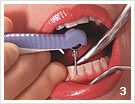
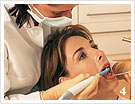
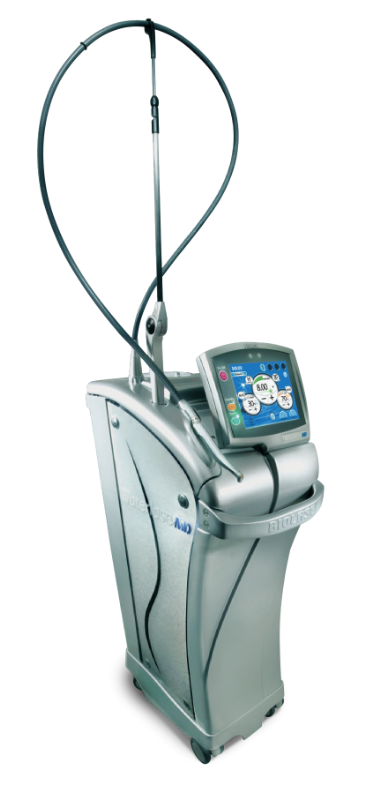
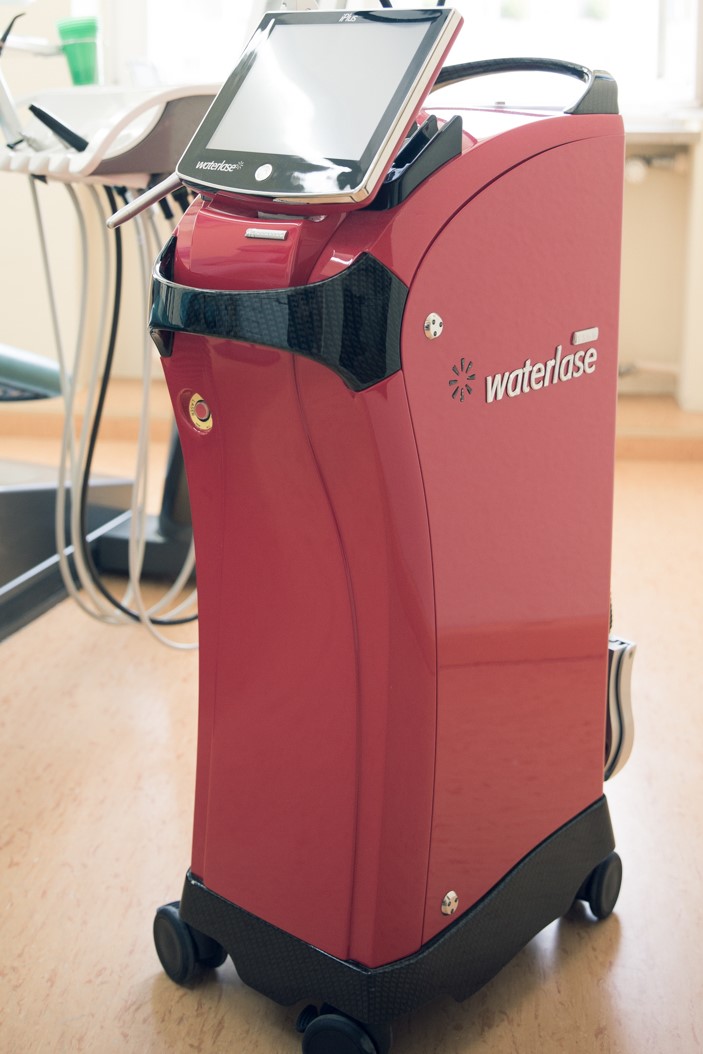
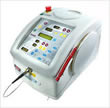

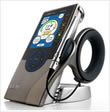



 With the first teeth, it is also time for the first contact with the dentist. This first acquaintance should not only take place when chocolate & co. leave their first traces on the teeth, but the opportunity to gain the child's trust exists much earlier. For example, when a parent visits the practice for a check-up.
With the first teeth, it is also time for the first contact with the dentist. This first acquaintance should not only take place when chocolate & co. leave their first traces on the teeth, but the opportunity to gain the child's trust exists much earlier. For example, when a parent visits the practice for a check-up.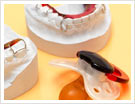 teeth stay healthy and strong for a long time and the first visits can be like "sitting in the dentist's chair on wheels".
teeth stay healthy and strong for a long time and the first visits can be like "sitting in the dentist's chair on wheels".
